“Does a photograph show only visual information or does it convey experience?”
Photography and the Unseen
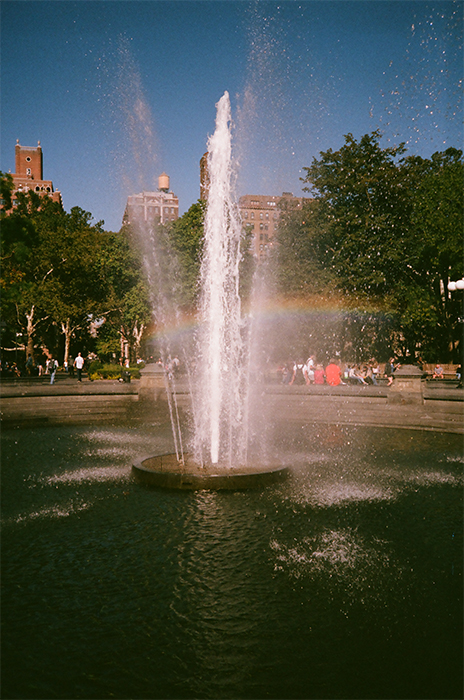
These photographs I tried to take in moments when what I saw was accompanied by something I couldn’t see—a feeling? emotion? energy? I couldn’t quite perceive what it was, but it made that moment feel somewhat more special (perhaps more real or true) than other moments. What I was looking at in that moment I photographed, hoping that somehow that invisible quality would register in the photograph—would translate, if only partially, into visuality. Does a photograph show only visual information or does it convey experience? Can a photograph convey the feeling(s) I experienced when I took it? Can you photograph more than what’s visible? With this project, I wanted to explore the unseen qualities, for I assume such exist, that sometimes make one pause and regard some moments with more attention than others.
In “The Ontology of the Photographic Image,” André Bazin writes:
“The aesthetic world of the painter is of a different kind from that of the world about him. Its boundaries enclose a substantially and essentially different microcosm. The photograph as such and the object in itself share a common being, after the fashion of a fingerprint. Wherefore photography actually contributes something to the order of natural creation instead of providing a substitute for it.” 1
A painter substitutes “the world about him” (to say that he substitutes “natural creation” is—unless one is talking about a painting whose subject matter is strictly nature—imprecise, because a lot of paintings depict a human-created world; also, in a philosophical sense, as far as human life can be considered to be embedded in a natural creation, every human activity—painting included—is a contribution to this creation. So I think it is better to say that the painter substitutes the world—implying that the world is both a natural and a human creation), because in each painting he is creating it anew. Even when the painter is drawing from the world—when he is painting what he sees out there—the painting is a product of his mind: of his visual perception of reality. The painting will not show the world as it is (or rather was)—it will show it as the painter saw it when he painted it. Because a result of the painter’s subjective vision of the world (and even if that vision be objective—even if the painter could see the world as it is, his painting technique is still manual and thus subjective), a painting of the world out there—no matter how detailed and accurately painted—is a substitution of the world.
On the other hand, the lens of the camera records the visible world as it is: what’s in front of it, the lens mechanically transfers to the film or the sensor. The photograph, a product of technology, is a copy, a mechanical transfer of the visible world. Arguably, not an exact copy—because while the process might be mechanical, different cameras (different lenses, films, sensors) render image differently: photographs of the same subject matter taken in the same light conditions but with different cameras will look slightly different. But a photograph is not a substitute of the world, because it is grounded in the visible world—it is the world itself which, via light, draws itself onto the film or the sensor. A painting is an analogy of the world, whereas a photograph (a traditionally taken one at least) is an index, a trace of the visible world; as Bazin puts it, the photograph and what it depicts share “a common being”.
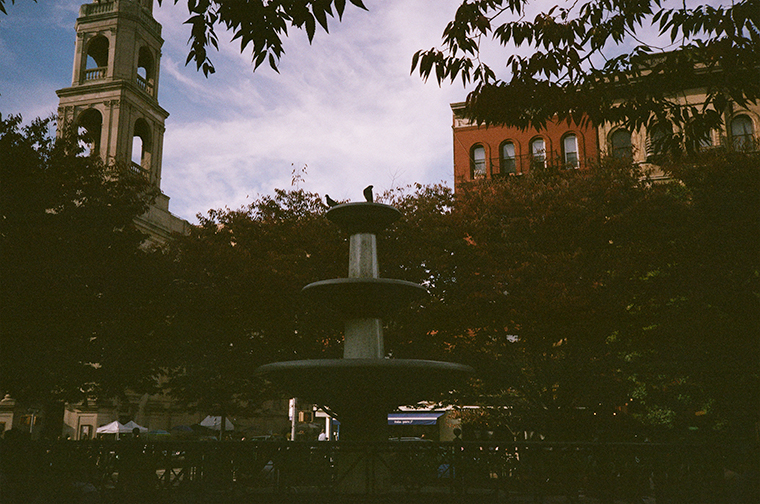
However, photography is not just a technological process; it is a mental one as well, because photographer’s vision is involved. And therein is photography’s possibility to be more than just a copy of the world: By her unique looking at and framing of the world, the photographer contributes something to the world. She can show the world in a new, unique way. And yet, theoretically speaking, every photograph is a unique contribution, because there cannot be two identical photographs. One, because no photograph is a copy of the whole world but of a piece of the world, and every photograph shows a different piece of the world. But, you will say, you can photograph the same thing again (for instance, put the camera on a tripod and photograph the same still subject matter). Yes, you can, however, every photograph is taken at a different (new) moment in time, therefore even if the subject matter is identical, each new photograph that’s taken of it is nevertheless unique. So theoretically speaking at least, no unique vision (or skill or talent) is needed to “contribute”; the very structure of our existence in time makes every photograph we take unique.
An artistic contribution, however, is a different matter: rephotographing in the present what has already been photographed in the past does not, in my opinion, qualify as a unique artistic contribution. And a true artistic creation cannot be but a unique creation, if we can agree that one definition of art is that is shows, or does, something new, even when the basis of the work (idea, theme, subject matter, feeling, even experience) is not new (then either the artist’s perspective, execution, style need to be new, or the details, the particulars of what is at the basis of the work need to be new). For example, to paint, today, landscapes in an impressionistic manner would not, according to this definition, count as a truly artistic activity (unless the paintings bring something truly unique to the table).
Theoretically speaking, everything that is made, done today, now is new—it is new in time. Even when something happens again, when you do something again, for the nth time, every time it happens, every time you do it, it happens, you do it, anew. Every event, every action is new. However, when “true” art is in question, it cannot, in my opinion, derive its newness—and hence the status of art—just because it is made today, now; just because it is current. Rather, a true work of art should gain its newness—or maybe better words are freshness or uniqueness—through the work’s vision, idea, the breadth and depth of the experience it can potentially give to the viewer, its execution, style, aesthetic and/or intellectual quality—qualities which are not bestowed upon the work by the time it is made in; these qualities take time to be achieved. In short, a work of art should be judged by its quality rather than praised solely because it is—because it is now—and because one has not seen what has been created before or does not apprehend what could yet be created. And the quality of a work should be judged timelessly—that is, judged against all that is as well as could be created. If suddenly time disappeared and we could perceive things in a permanent present, we could see that a lot of what we thought of as new, as different was not actually such—that there are things, creations, events, phenomena in the past, and I guess then in the future too, which are rather similar to what is, is being done, is happening today, now. On the other hand, a lot of good art arises out of necessity—it is necessitated by its situation and time. But let’s get back to photography.
In short, a photograph could be said to be a contribution to the world, because it draws directly from the visible world—it copies the visible world, and yet it also adds something—the photograph will always look different than what the eye saw at the moment of taking it. In contrast, a painting could be said to be a substitution of the world, because a painting is always a product of the painter’s mind and skill.

And yet, theory aside, it seems clear that a painting too (indeed, every human activity) is a contribution to the world. Because it is conceived of, worked on, and, when finished, it remains in the world. It doesn’t matter that what it depicts is not exactly how the world looks or looked; the painting is still a process and an object that takes place and remains in the world, and is therefore—like any human activity—a contribution to the world. And maybe photography too is both, it is a substitution of the world too: a substitution of an ephemeral and unique moment visible to our eyes with an image of that moment—an object which, though measured against eternity is also ephemeral, yet, measured against human life, can last for a considerable stretch of time.
But I’ve digressed. What I wanted to show is that the photographer—because she need not concern herself with an accurate depiction of the visible world—because the camera does the job for her—can focus more on searching for the invisible in the visible: for the spiritual in the material.
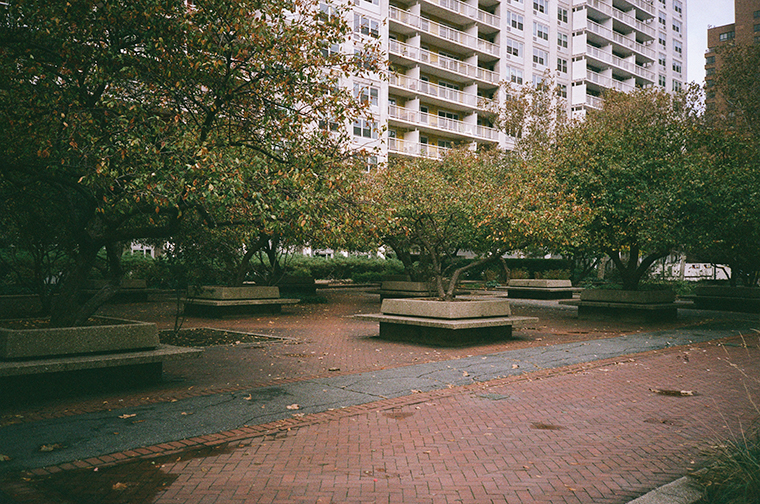
But even if it’s there, here, can it be visually represented? Bazin writes: “Only the impassive lens, stripping its object of all those ways of seeing it, those piled-up preconceptions, that spiritual dust and grime with which my eyes have covered it, are able to present it in all its virginal purity to my attention and consequently to my love.” 2
We do often look at the world in what could be called an impure way: our look is often laden with ideas, judgments, preconceptions, emotions too, and those prevent us from seeing the world in its visual purity and richness. We often look at names and concepts of things rather than at the things themselves, in their full visual particularity. “To look,” writes John Berger, “at everything which overflows the outline, the contour, the category, the name of what is.”3 That’s how I tried to take these photographs: with my conceptual, rational knowledge of the world suspended, just looking and feeling.
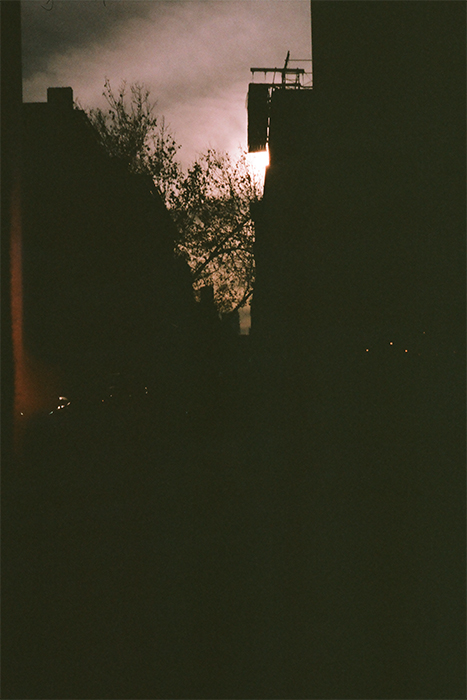
And yet I don’t think it’s always that we are looking at the world through impure eyes, nor that it is only through “objective” technology, such as the camera, that we can get to see the world as it really is; that there is a pure reality that’s inaccessible to my tainted perception. Maybe there is, but maybe there’s nothing wrong, or lacking, in my subjective looking at things; maybe there are no Platonic forms, just my fragmentary perception of things.
John Berger writes: “It is very possible that visibility is the truth and that what lies outside visibility are only the ‘traces’ of what has been or will become visible.”4 Perhaps “What you see is what you see; nothing more. Meaning is where you are. There is no hidden significance, no inner meaning.”5
So maybe my quest for more special moments, in which it felt like there’s something more in them than just the visible, was mistaken. There were no mystical unseens lurking in the air, or in me, when I took the photographs; just that this particular sight was more visually pleasing, “aesthetic.”
But no, I don’t fully agree—at least when it comes to taking my own photographs (at least for this project)—with either Bazin or Berger. I don’t take photographs in order to impassively record, in order to reveal the world in its purity. I do want to capture something pure, or beautiful, or true—but not because the lens made it look such, but rather because I felt it being such—because I felt in me, or in the air, the moment before I took the photograph, that there is something more to this moment than just its visibility, visuality; that there is present a quality of something invisible, of something more than just the visible (and it is detached from the visible), and that feeling of this something’s presence is what makes me take a photograph of exactly this moment.
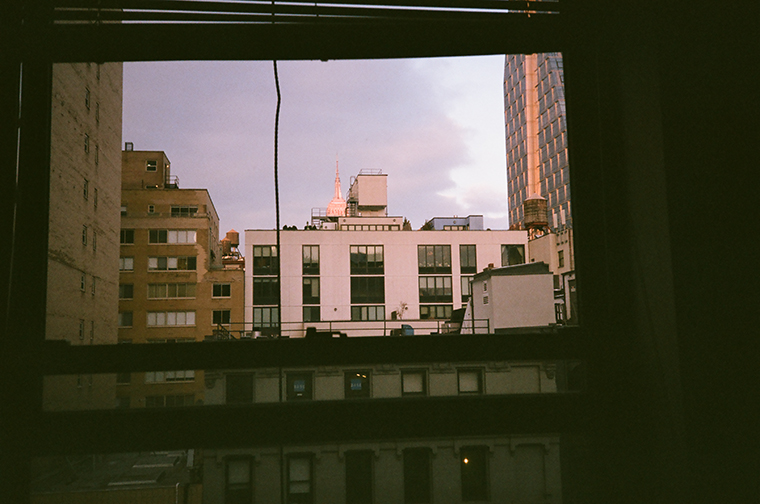
Perhaps these special moments (and the resulting pictures) are not so much haphazard happenings as they occur to me when I have prepared myself to receive them. And perhaps that preparing consists in cultivating a special feeling in me, which, when I have it, shows me the world in a more special way. Perhaps to find in the world what I want to find in it—beauty, love, truth, whatever we wish to find—means finding, or sometimes creating it, first in myself, and once I have found/created it in my interiority, external changes will follow. And maybe it works backwards, too: You can find something in the world that then changes you inwardly. I say just “find” here rather than “find or create,” for creation, it seems to me, is always both an external and internal activity.
Joseph Brodsky suggests that what we see in, or how we see, the outside world is a reflection of our inner world: “It occurs to one that what we habitually bill as our discoveries are but the projections of what we contain within upon the outside. That the physical reality of the world/nature/you-name-it is but a screen—or, if you like, a wall—with our own structural imperatives and irregularities writ large or small upon it. That the outside is a blackboard or a sounding board for our ideas and inklings about our own largely incomprehensible tissue.”6
However, Brodsky also holds that inspirational moments (you could say that’s what I sought in this project)—moments when you are able to perceive or create something truly new or great—are a matter of chance. “The ability to make is a passive ability: a grain of sand’s response to the horizon. For it is the sense of an opened horizon that impresses us in a work of art or a scientific breakthrough, isn’t it? The ability to make, in other words, depends on the horizon and not on one’s resolve, ambition, or training. To analyze this ability only from our end of the story is therefore erroneous and not terribly rewarding.”7
It sounds about correct. And yet, I don’t think, or don’t want to think, that those moments—such as feelings of having glimpsed at a truth (or supreme beauty or perfection); or events—such as scientific breakthroughs; or works—such as great and/or groundbreaking works of art—that they are only a matter of chance, a whim of the “horizon” as to when, and to whom, it will come forth. I think, or want to think, that human has more than a passive role to play; that one can go toward, or attract—most probably through resolve, ambition and training—those moments, events, works more special, groundbreaking, great. Practice plays a role here I think. But maybe not such a big one: maybe it’s not about working the hardest. Maybe it is so that there’s not much we can do—those moments, events, works either come and happen to you, or they don’t. And yet, if they do happen to me, I would, I think, enjoy them more knowing that I had done at least some preparation, taken at least some steps toward them. And at least in photography, well, walking and looking is a big part of it.

- André Bazin, “The Ontology of the Photographic Image”, translated by Hugh Gray. Film Quarterly, vol. 13, no. 4 (1960): 8. www.jstor.org/stable/1210183
- Ibid.
- John Berger, “On Visibility,” The Sense of Sight (Pantheon Books, 1985), 219
- Ibid.
- John Berger, “Manhattan,” The Sense of Sight (Pantheon Books, 1985), 61.
- Joseph Brodsky, “A Cat’s Meow,” On Grief and Reason: Essays (Farrar Straus Giroux, 1996), 30.
- Ibid.